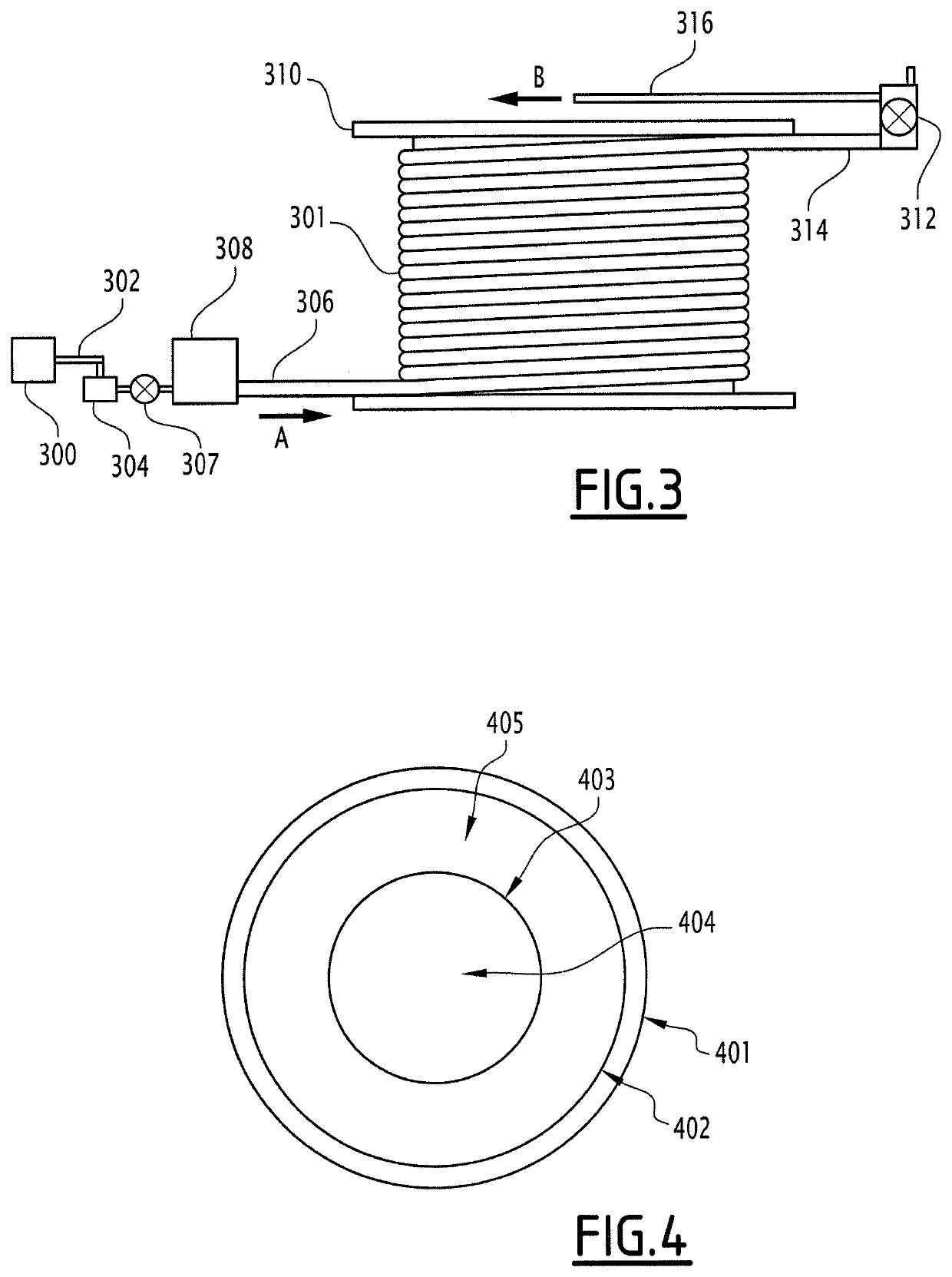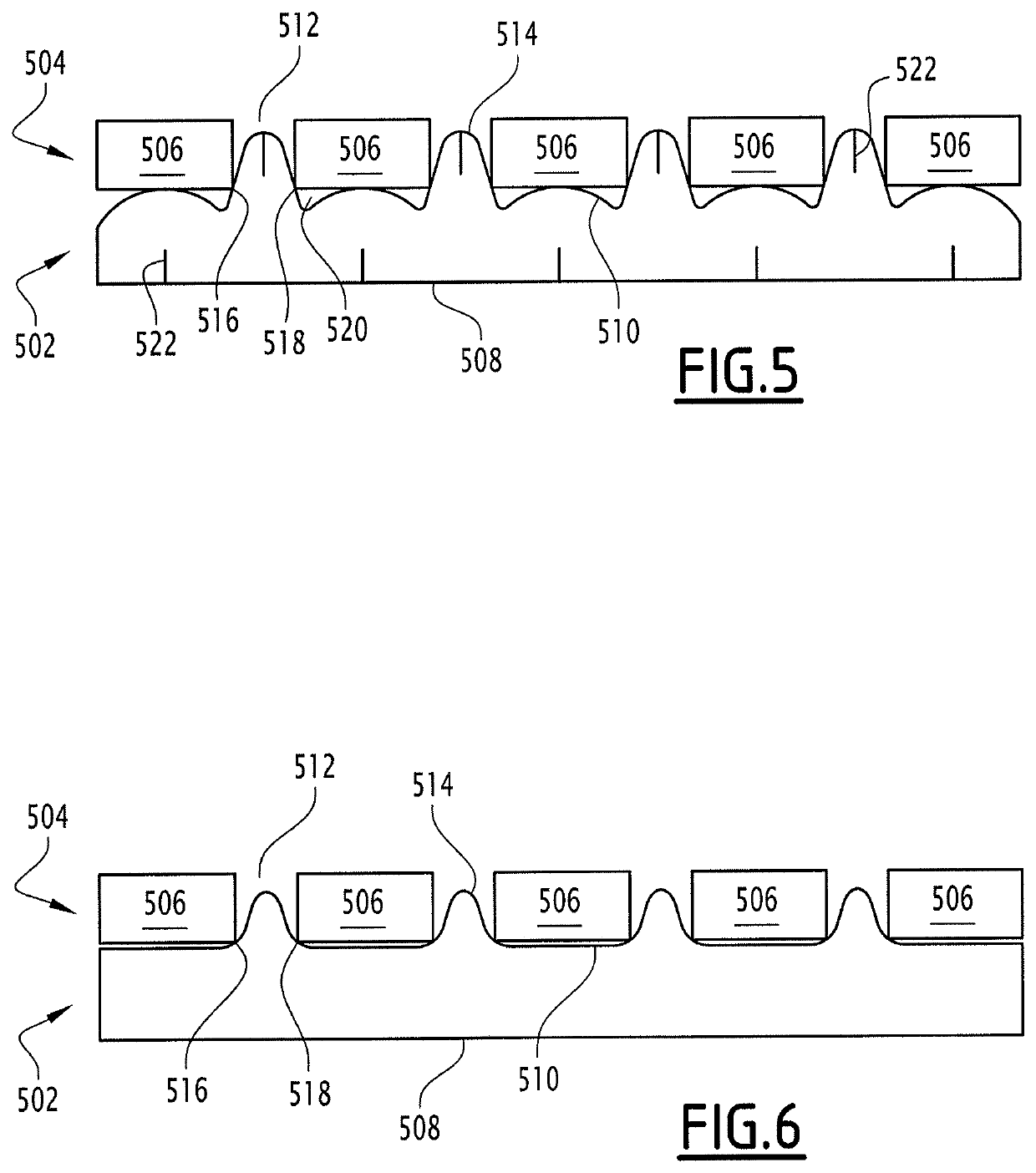Method for pressurizing the inner flow space of a flexible pipe intended for transporting hydrocarbons
a flexible pipe and flow space technology, applied in the direction of fluid-loss/gain rate measurement, fluid-tightness measurement, instruments, etc., can solve the problems of large deformation of the polymer sheath in the butt gap, appearance of cavitation and/or crazing on the polymer sheath, and insufficient cavitation to accommodate the deformation. , to achieve the effect of reducing, or even preventing, cavitation and crazing
- Summary
- Abstract
- Description
- Claims
- Application Information
AI Technical Summary
Benefits of technology
Problems solved by technology
Method used
Image
Examples
Embodiment Construction
[0171]Pressurization tests with two pressure maintenance sequences (n=1) were done with three different fluids, the natures, densities and viscosities of which are provided in table 1.
[0172]
TABLE 1density and kinematic viscosity of the three tested fluidsmeasuringMarcol 52Durasyn 174Imethodwateroiloilkinematic viscosityASTM D 4450.667.50412at 40° C.(mm2 / s)kinematic viscosityASTM D 4450.292.2050at 100° C.(mm2 / s)density at 20° C.ASTM D 40521825 to 834846
[0173]The three identical ST 63.60103 (Technip) flexible pipes used:
[0174]comprised, from the outside toward the inside of the pipe:[0175]an outer sealing polymer sheath (10),[0176]one or more tensile armor ply(plies) (12, 14),[0177]a pressure vault (18),[0178]an inner sealing polymer sheath (20) made from weakly plasticized PVDF (Gammaflex® TP22) (inner diameter of 77.50 mm), and[0179]a metal carcass (22),[0180]had an initial length of the flexible pipe (with tips) of 5.67 m, an inner diameter of 2.5″, an outer diameter of 142 mm, a h...
PUM
| Property | Measurement | Unit |
|---|---|---|
| inner pressure Pi | aaaaa | aaaaa |
| pressure | aaaaa | aaaaa |
| kinematic viscosity | aaaaa | aaaaa |
Abstract
Description
Claims
Application Information
 Login to View More
Login to View More - R&D
- Intellectual Property
- Life Sciences
- Materials
- Tech Scout
- Unparalleled Data Quality
- Higher Quality Content
- 60% Fewer Hallucinations
Browse by: Latest US Patents, China's latest patents, Technical Efficacy Thesaurus, Application Domain, Technology Topic, Popular Technical Reports.
© 2025 PatSnap. All rights reserved.Legal|Privacy policy|Modern Slavery Act Transparency Statement|Sitemap|About US| Contact US: help@patsnap.com



